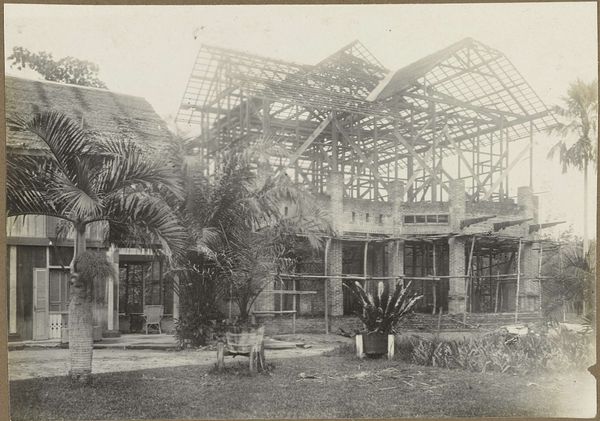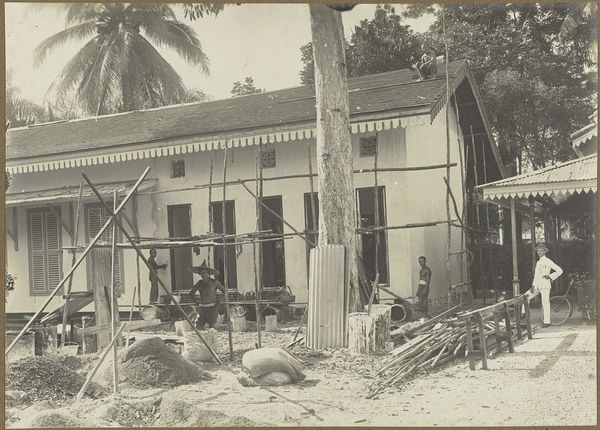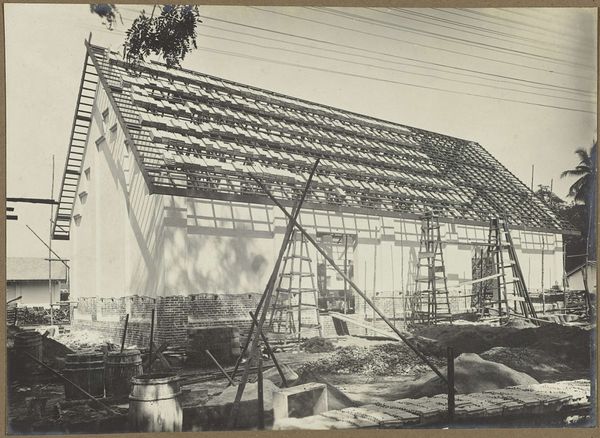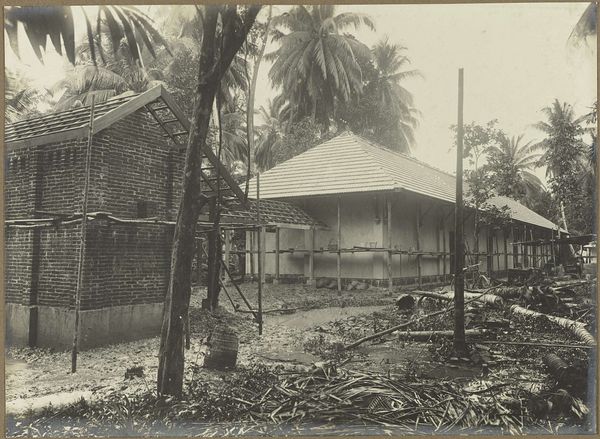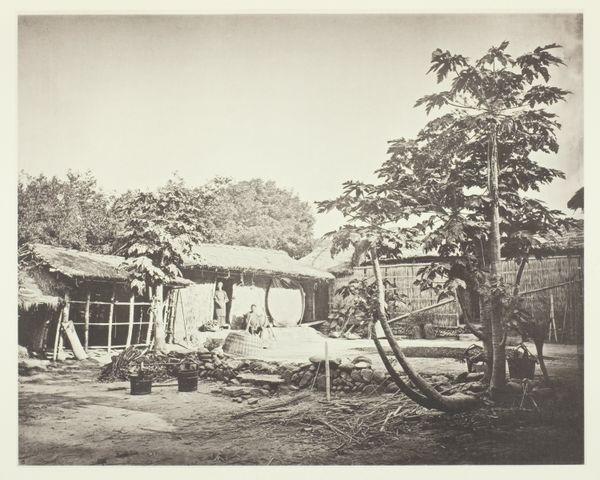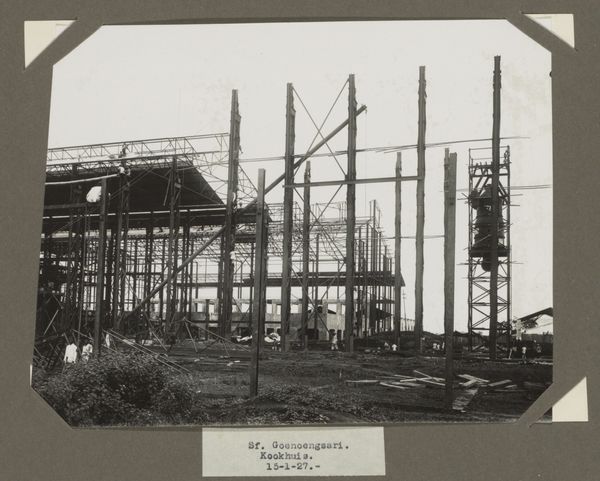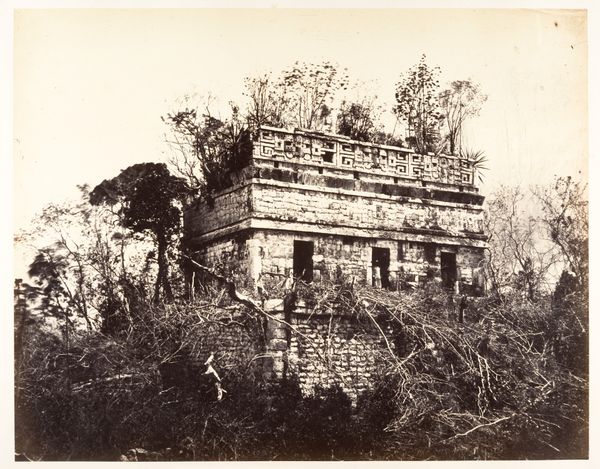
photography, site-specific
#
landscape
#
photography
#
constructionism
#
site-specific
#
cityscape
Dimensions: height 111 mm, width 160 mm
Copyright: Rijks Museum: Open Domain
Curator: Here we have a fascinating anonymous photograph, entitled "Bouw van een woonhuis," taken sometime between 1914 and 1919. It documents the construction of a house. Editor: It strikes me immediately as something skeletal. All these wooden beams crisscrossing each other give a strange feeling of vulnerability, even in the process of creation. You can see the landscape seeping into this structure in a constant dialectic. Curator: Yes, that interplay between the built environment and the natural world is so central to this piece, isn't it? The surrounding landscape isn't just backdrop; it is completely integrated into this image. One is naturally driven to the politics involved. One could even argue that this house represents not only the development of an architectural site but also highlights social inequalities, as access to land and construction has historically been determined by race and gender. Editor: Exactly! And if you consider the material itself, the wood, it speaks volumes about labor and access to resources during that time. I am deeply drawn to the evidence of process visible everywhere. Look at the stacks of lumber in the foreground! They draw one's eye into all of the specific labor and the lives tied up in those resources. Also that brick wall in the middle of this structure. This is how wealth is materialized! Curator: Precisely! Thinking about the medium too – photography itself, especially at this time, also plays a crucial role in shaping perceptions of progress, modernity, and colonialism, by allowing for the ability to capture and document. How images could either support existing racial and class power imbalances, or actively interrogate them, even expose them. Editor: This interplay is especially intriguing because the photograph captures the building mid-construction, it's almost performing or highlighting its constructed nature—as a result, even as it seems fragile, it becomes hyper-visible. I will walk away from this photograph now contemplating this intersection of progress and what the actual cost is for certain groups, especially manual labourers who work to build things. Curator: Absolutely. It provokes a reflection on whose labor built it and who would ultimately occupy it, and in that, it is a photograph that speaks directly to the power dynamics embedded within the seemingly simple act of building a home.
Comments
No comments
Be the first to comment and join the conversation on the ultimate creative platform.

